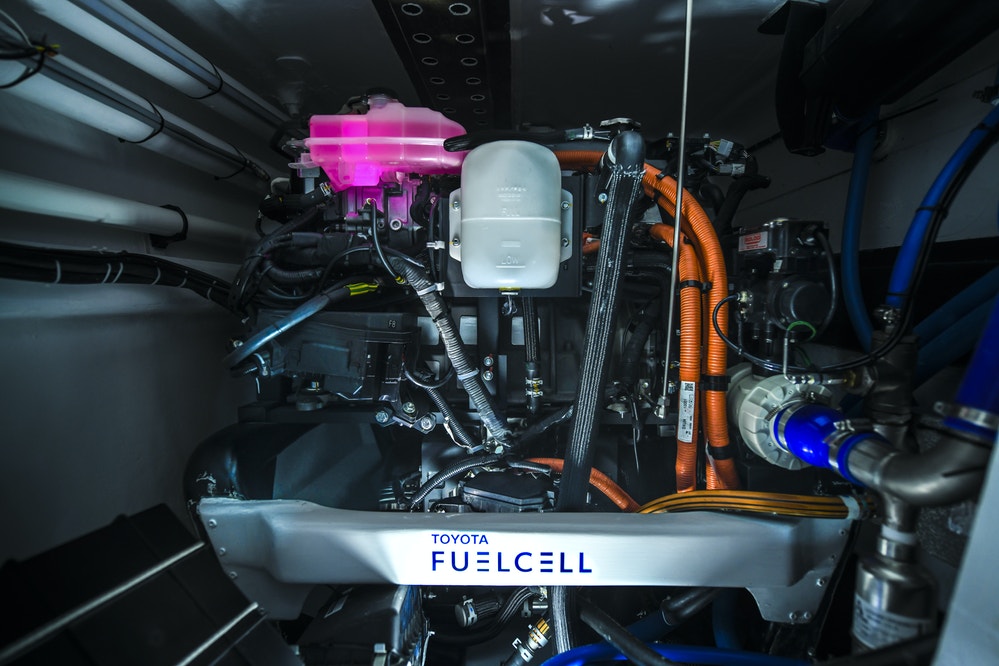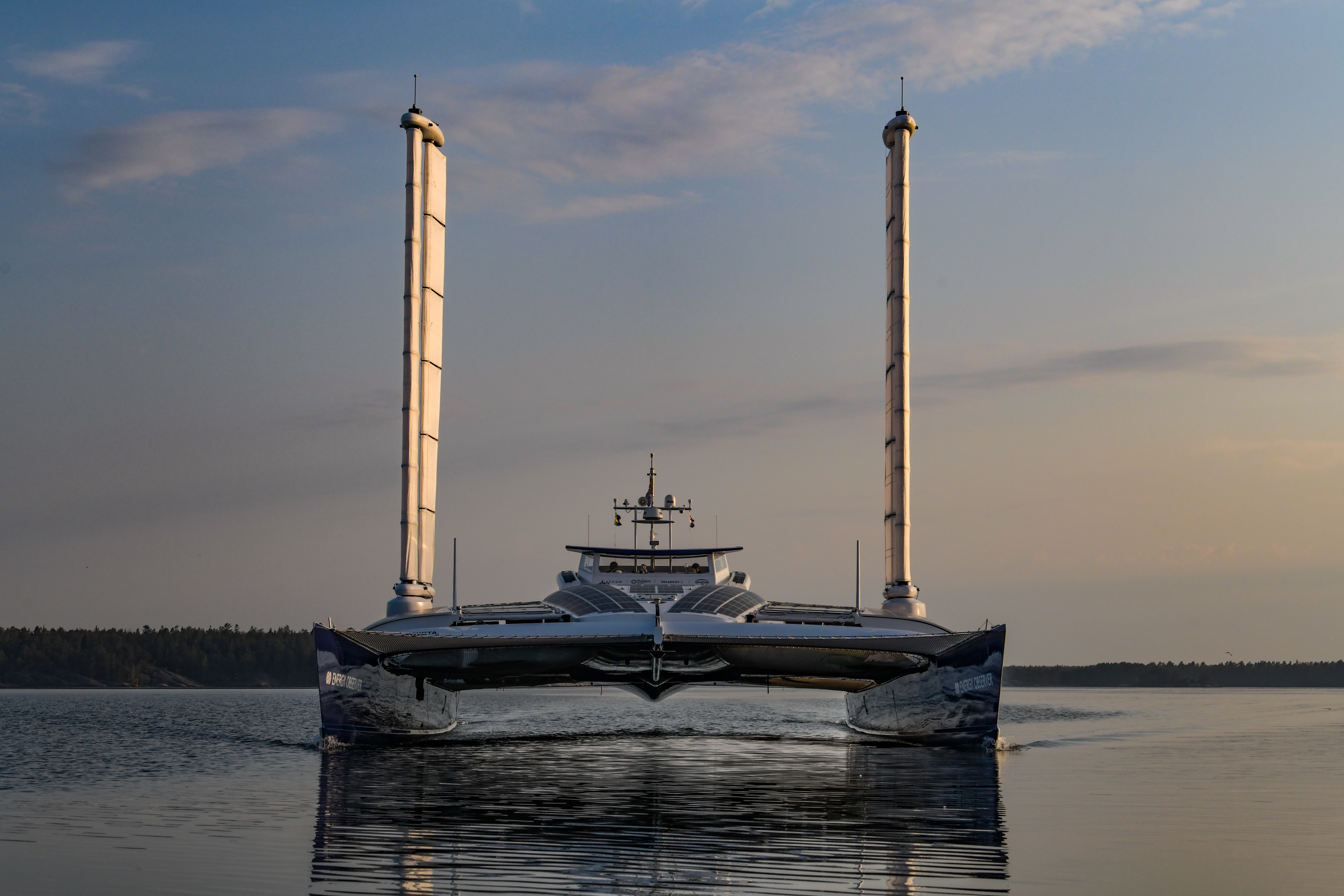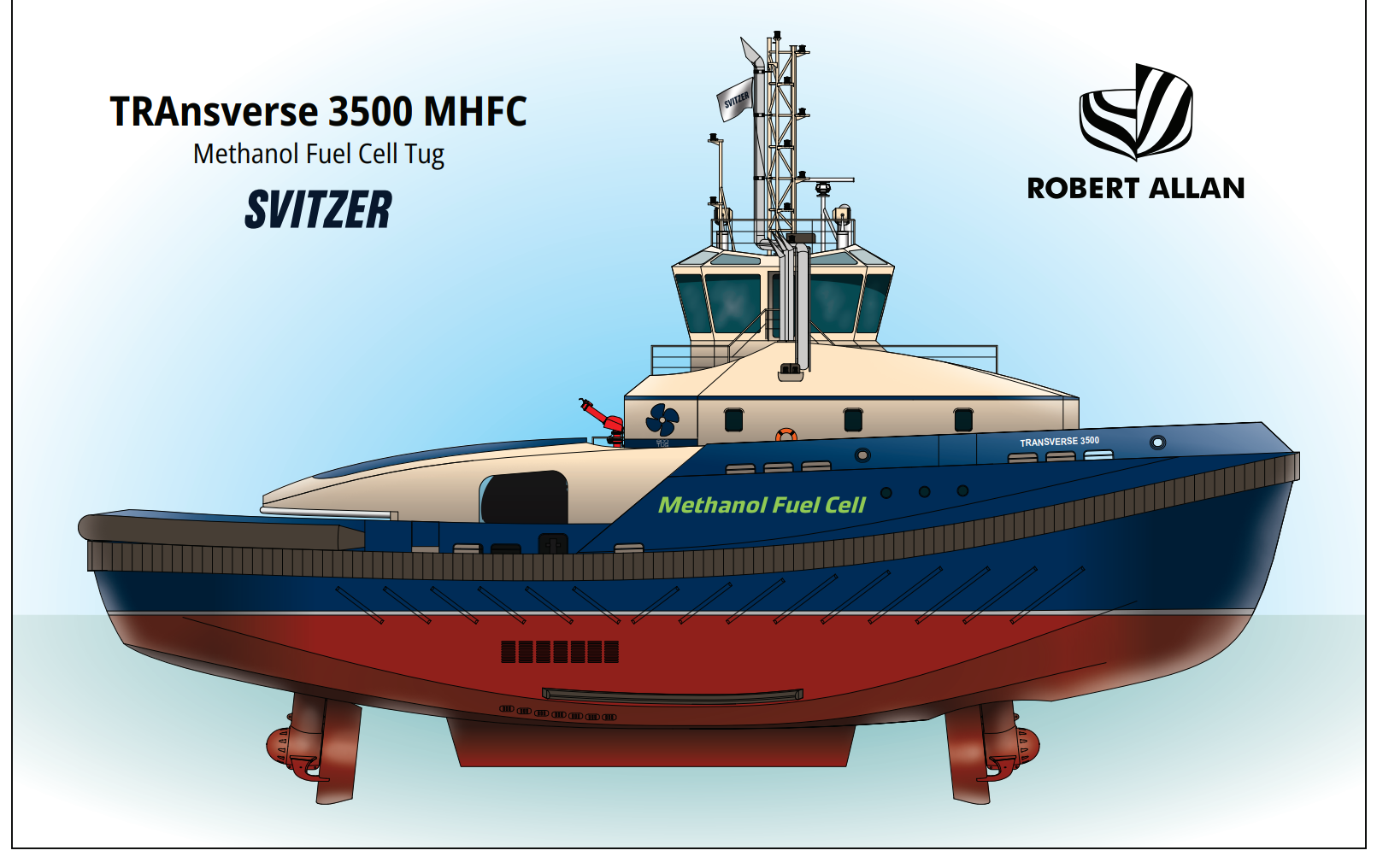As the car maker teams up with Corvus Energy in Norway it may become the game changer for fuel-cell and stored energy use in certain vessel types as shipping's decarbonisation efforts accelerate
Toyota, famous for its hybrid- powered Prius and the hydrogen fuel-cell powered Mirai, announced late last year it was going to make its technology available for other industries that are seeking a route to decarbonisation. One of the first will be shipping through a new partnership with maritime battery maker, Corvus Energy.
The move into the maritime industry could be a significant influence as Toyota is already mass-producing fuel cells that it says can be constructed in a modular way to create the power needed for industrial vehicles and vessels. In a press briefing ahead of the official launch of a new Corvus Energy production facility in Norway, Corvus Energy explained its decision to expand its product line to include fuel cells, and Toyota Europe, which has a dedicated fuel cell development facility in Belgium, outlined its desire to find new markets for its second-generation fuel cell technology.
Toyota’s experience with fuel cell technology has largely been seen with the success of the Mira car, with a second-generation design now being sold. In the maritime space it has been gathering useful experience with a fuel cell module aboard Energy Explorer, the showboat project that has been sailing round the world demonstrating how a yacht-sized vessel can sail using only renewable power,
In the press conference ahead of the launch of the new Bergen facility to produce the systems Toyota Europe’s fuel cell strategy manager Freddy Bergsma said the company is in the process of rolling out new modules that it has committed to selling into industrial sectors. Toyota believes hydrogen will play an important role in the future, he said, adding that while the company has been developing fuel cell technology for about 30 years, although it has found more traction in the past with hybrid and battery systems.(In the passenger car market there is ongoing debate about the comparative benefits of fuel cell cars and battery powered vehicles).
Bergsma added that while the fuel-cell powered Mirai represents only 3,000 of the 10m annual car sales for Toyota, these 3,000 fuel cell modules represent a large percentage of the growing fuel cell market globally, giving it some of the best experience in the world. “We have the economies of scale from which other industries can benefit,” he said.
Modular and mass produced
Bergsma said that while the passenger car systems are not directly applicable to other uses, by repackaging the technology it has been able to develop a standard compact modular approach to enable higher electrical power generation.
Toyota’s first generation fuel cell technology is soon to be replaced by a second generation, which the company is working on becoming lighter, more compact, with higher power, with greater energy density and therefore cheaper. Additionally by being modular it enables Toyota the opportunity to mass produce the systems for cars and industrial (including shipping) use. A third generation is already under development.
But while Toyota believes it has some of the most advanced experience in the fuel cell market, Bergsma says that it needs the industrial sectors to increase demand for hydrogen fuel, or other fuels that fuel cells use, to complete the circle. “We need the industrial systems as these will be the consumers of the hydrogen and make the economies of scale for the hydrogen market,” he said.
Corvus will begin the development of its Toyota technology backed marine system this year, with the aim to get a first type approves PEM (proton-exchange membrane) fuel cell system by 2023 or 2024, and then have its automated Bergen factory making the systems in 2024. It then plans to also look at a second fuel cell system for other larger vessel types using either high temperature PEM technology or solid oxide fuel cell technology; both technologies have higher energy efficiency but come with different challenges. Toyota has not had any plans to move into SOFC technology.
Corvus plans also include the newly announced partnership in Norway with various companies and institutions in the country to develop fuel cells. The consortium includes shipowners Wilhelmsen and Norled, energy company Equinor (which is a major shareholder of Corvus, but it also has plans to be a major hydrogen producer), as well as NCE Maritime Cleantech and the University of South East University (to help examine safety considerations for marine fuel cells) and the Norwegian ship designer LMG Marine.
Fuel cell 101

A fuel cell will generate electricity, the battery (or ESS) will store it. Fuel cells can have a range of fuels to create the electrical power, and there are different technologies in existence, and still under development, to do this. Fuel cells can use a range of energy carriers (carbon or hydrogen-based gases and liquids) to generate electricity. The two main technologies for transportation and likely to see widespread use in shipping are the PEM-FC (proton exchange membrane) and SO-FC (Solid-Oxide).
Amongst the many differences between the two, PEM has a liquid polymer membrane as the electrolyte while the electrolyte in a SOFC uses ceramics that become active when they are at extremely high temperatures (u to 1,000 degrees C, compared to 100 to 200 degrees C for PEM).
While SOFC research and use shows higher efficiency for SOFC; they have a much longer startup time. Other fuel cell types include alkaline fuel cells, phosphoric acid fuel cells and molten carbonate fuel cells. There is ongoing research into salt water and molten salt fuel cells.

Toyota’s involvement with “Energy Observer” began with the vessel’s launch in 2017, and most recently with a specially designed fuel cell system for the experimental showcase. Energy Observer is sailing round the world using hydrogen, solar, wind and hydro-generation only. It has made numerous showcase stops in its experimental mission and last year made its first transatlantic crossing.
































